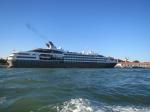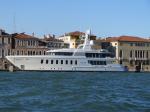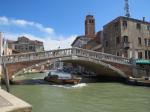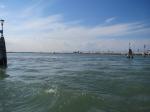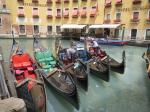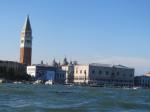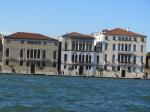The Grand Canal
The entrance to the Grand Canal around St Mark’s Square, the skyline is dominated by the beautiful Baroque church of Santa Maria della Salute, the church looks huge from the waterline, it like many other buildings alongside the canal has been built on over a million wooden piles.
As well as the Santa Maria della Salute, the other major landmark at the entrance to the canal is that of the Campanile of San Marco in St Mark’s Square. The spire is 323 feet above sea level and is topped with a golden weather vane.
The Grand Canal forms one of the major water-traffic corridors in the city. Public transport is provided by water buses and private water taxis, and many tourists explore the canal by gondola though these tend to be rather expensive.
One end of the canal leads into the lagoon near the Santa Lucia railway station and the other end leads into Saint Mark Basin; in between, it makes a large reverse-S shape through the central districts of Venice. It is 3.8 km long, and 30 to 90 m wide, with an average depth of five metres (16.5ft).
The banks of the Grand Canal are lined with more than 170 buildings, most of which date from the 13th to the 18th century, and demonstrate the welfare and art created by the Republic of Venice.
Because most of the city's traffic goes along the Canal rather than across it, only one bridge crossed the canal until the 19th century, the Rialto Bridge. There are currently three more bridges, the Ponte degli Scalzi, the Ponte dell'Accademia, and the controversial Ponte della Costituzione from 2008, designed by Santiago Calatrava, connecting the train station to Piazzale Roma, one of the few places in Venice where buses and cars can enter.
Most of the palaces emerge from the water without any pavements; consequently you can only pass the front of the buildings on the Grand Canal by boat.
|











